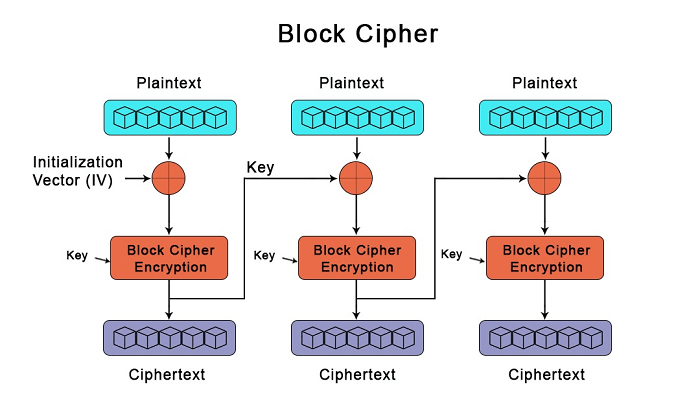Examples of Block Ciphers

Here are examples of some well-known block ciphers:
Data Encryption Standard (DES): Developed in the 1970s, DES was the first widely used block cipher. It operates on 64-bit blocks of plaintext and uses a 56-bit key. Due to advances in computing power, DES is now considered insecure for many applications, but it laid the foundation for modern block cipher design.
Triple DES (3DES): 3DES is a variant of DES that applies the DES algorithm three times with different keys. It provides improved security compared to DES but is slower due to its multiple rounds of encryption. 3DES is still used in some legacy systems but is gradually being replaced by more modern ciphers like AES.
Advanced Encryption Standard (AES): AES is a symmetric-key block cipher adopted by the U.S. government as a standard for securing sensitive information. It supports key sizes of 128, 192, or 256 bits and operates on 128-bit blocks of plaintext. AES is widely used in various applications due to its strong security and efficiency.
Blowfish: Designed by Bruce Schneier in 1993, Blowfish is a symmetric-key block cipher that supports variable key lengths from 32 to 448 bits. It operates on 64-bit blocks of plaintext and is known for its simplicity and fast encryption/decryption speed. However, Blowfish is not widely used in new systems due to concerns about its security compared to more modern ciphers like AES.
Twofish: Twofish is a symmetric-key block cipher developed as a candidate for the Advanced Encryption Standard (AES) competition. It supports block sizes of 128 bits and key sizes of 128, 192, or 256 bits. Twofish is known for its strong security and flexibility, but it was not selected as the AES standard.
Serpent: Serpent is another symmetric-key block cipher developed as a candidate for the AES competition. It supports block sizes of 128 bits and key sizes of 128, 192, or 256 bits. Serpent is known for its high security and strong resistance to cryptanalysis.
Camellia: Camellia is a symmetric-key block cipher developed jointly by Mitsubishi Electric and NTT of Japan. It supports block sizes of 128 bits and key sizes of 128, 192, or 256 bits. Camellia is widely used in various applications, particularly in Japan, and is recognized for its strong security and efficiency.
These are just a few examples of block ciphers, and there are many other block ciphers with different characteristics and applications.
Thank you,